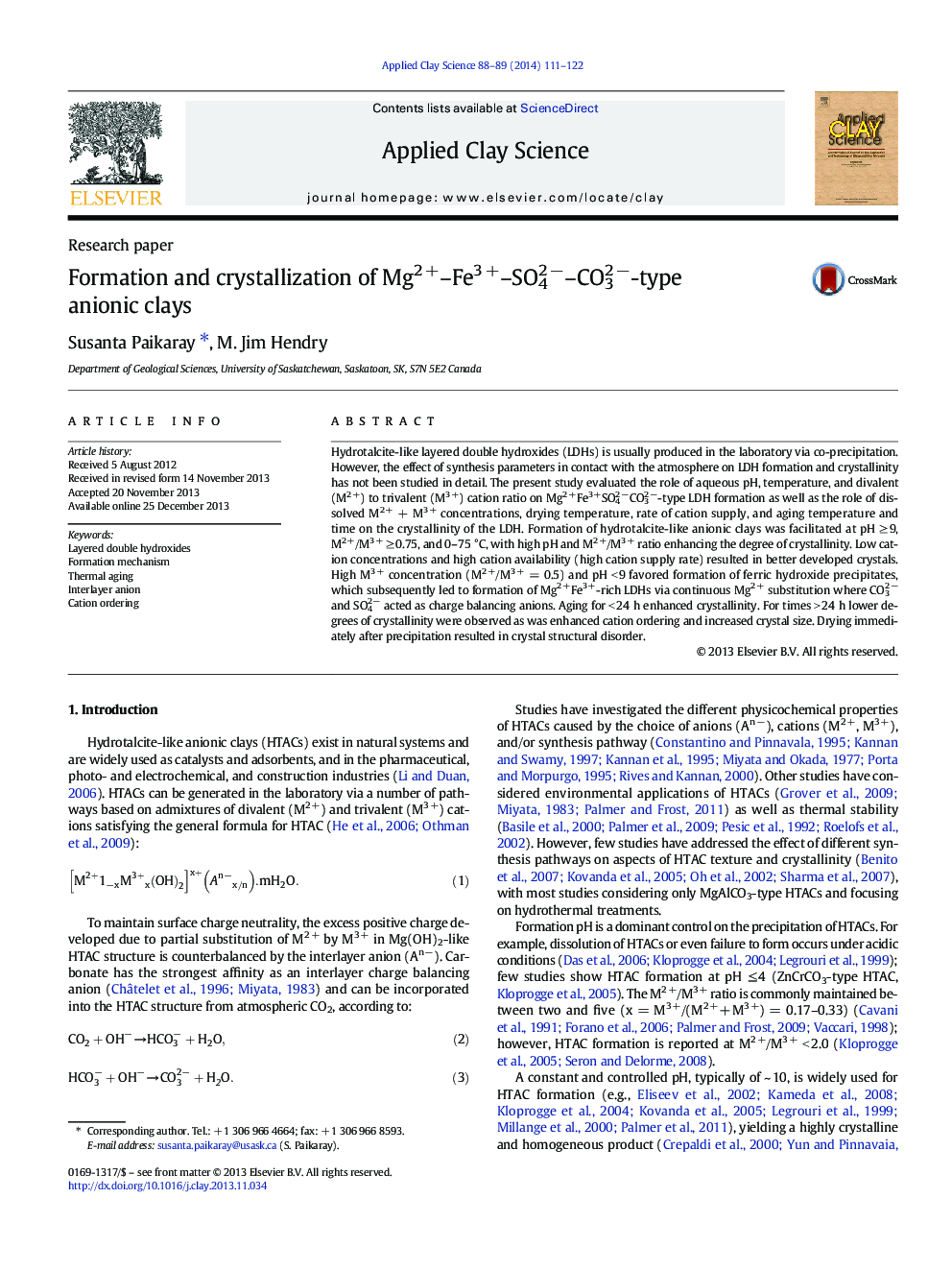| Article ID | Journal | Published Year | Pages | File Type |
|---|---|---|---|---|
| 8047115 | Applied Clay Science | 2014 | 12 Pages |
Abstract
Hydrotalcite-like layered double hydroxides (LDHs) is usually produced in the laboratory via co-precipitation. However, the effect of synthesis parameters in contact with the atmosphere on LDH formation and crystallinity has not been studied in detail. The present study evaluated the role of aqueous pH, temperature, and divalent (M2 +) to trivalent (M3 +) cation ratio on Mg2 +Fe3 +SO42 âCO32 â-type LDH formation as well as the role of dissolved M2 + + M3 + concentrations, drying temperature, rate of cation supply, and aging temperature and time on the crystallinity of the LDH. Formation of hydrotalcite-like anionic clays was facilitated at pH â¥Â 9, M2 +/M3 + â¥Â 0.75, and 0-75 °C, with high pH and M2 +/M3 + ratio enhancing the degree of crystallinity. Low cation concentrations and high cation availability (high cation supply rate) resulted in better developed crystals. High M3 + concentration (M2 +/M3 + = 0.5) and pH < 9 favored formation of ferric hydroxide precipitates, which subsequently led to formation of Mg2 +Fe3 +-rich LDHs via continuous Mg2 + substitution where CO32 â and SO42 â acted as charge balancing anions. Aging for < 24 h enhanced crystallinity. For times > 24 h lower degrees of crystallinity were observed as was enhanced cation ordering and increased crystal size. Drying immediately after precipitation resulted in crystal structural disorder.
Related Topics
Physical Sciences and Engineering
Earth and Planetary Sciences
Geochemistry and Petrology
Authors
Susanta Paikaray, M. Jim Hendry,
